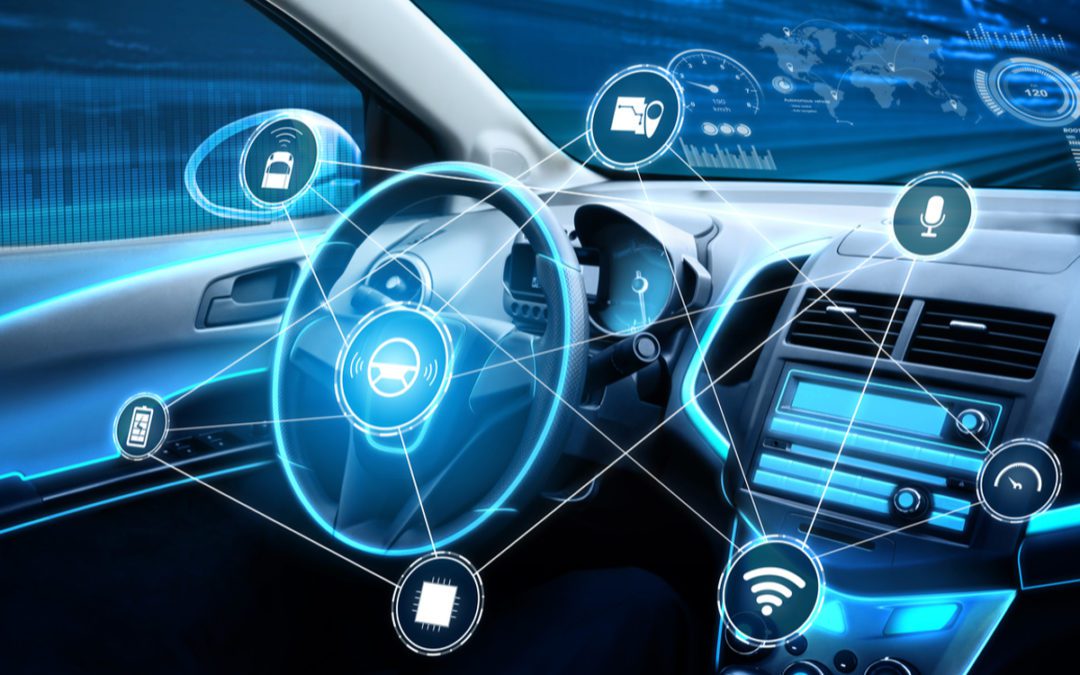The phrase “ADAS sensors” might seem unfamiliar, but you’ve likely come across and interacted with ADAS sensors without knowing it. In fact, if you’ve been in a car built after 2018, you’ve definitely interacted with ADAS sensors. Advanced driver assistance systems — ADAS for short — are the sensors that will keep your car safe now – and in the future – as automotive technology continues to be developed. Read on to learn more about ADAS sensors and why they’re important to the modern vehicle.
Modern-Day Types of ADAS Sensors
Remember how we said you’ve definitely interacted with ADAS sensors at least once? One example of an ADAS sensor is a backup camera. All vehicles built after 2018 are legally required to have backup cameras installed to reduce human error potential, since many accidents are caused during reversing and backing automobiles. Other ADAS sensors in use right now include:
Blind spot monitoring
Many new vehicles on the market allow for advanced blind spot monitoring using a series of cameras and sensors, reducing the risk of blind spot collisions.
Collision warning
Some newer vehicles now come fitted with ADAS sensors that sound an alarm when the automobile in question is too close to an object, road barrier, or other vehicle. This alerts drivers to the potential for collision. Many of these are mounted onto your windshield and glass components.
Parking assistance
Many backup cameras are integrated with ADAS parking sensors specifically to show a lined parking guide for drivers, helping them back safely into a parking spot or look out for pedestrians in the way while they back up the car. These may be mounted in body components or sideview mirrors.
Built-in navigation system
ADAS sensors are calibrated and integrated with location data to provide built-in navigation features in some modern automobiles. Some integrate with mobile technology via the steering wheel or dashboard or allow drivers to save offline maps for areas with limited cell service.
Adaptive cruise control (ACC)
Adaptive cruise control is not unlike regular cruise control, except instead of being adjusted with a button as needed, it switches on and off automatically to help drivers maintain a safe speed limit and works to avoid forward collision.
Lane Keep Assist (LCA or LDWS)
Lane Keep Assist or another feature called Lane Departure Warning System(s) allow a vehicle to keep in its lane or highways markings and track automatically down the roadway. These systems view lane markings or signage and integrate cameras and sensing technology to allow for vehicle autonomy. Many of these systems are mounted to the vehicle glass and windshield with special viewing areas and brackets.
ADAS Sensors of the Future
In the very near future, ADAS applications won’t be limited to just backup cameras and blind spot detection. Coming sooner than you think, ADAS sensors may be upgraded to feature any of the following futuristic advancements (and potentially many more!)
- Traffic sign recognition
- Autonomous vehicle startup and shutdown based on vehicle health
- Automatic emergency braking
- Full surround view and complete blind spot elimination
- Built-in collision monitoring system
- Fully autonomous parking assistance
- Fully autonomous drives (“self-driving cars”)
ADAS Sensors Aren’t Perfect
None of the current driver assist systems are perfect because there’s always a human behind the wheel of the car or vehicle. Until the self-driving car is perfected, and no one manually operates a vehicle anymore, there’s always the potential for human error. It’s also very important to remember that ADAS sensors need routine care and recalibration to perform adequately — it’s a matter of vehicle safety. Example – Suppose your car detected objects that weren’t there, so you came to a screeching halt — and suddenly made yourself vulnerable to an accident. In that case, you’d wish you’d taken care of ADAS camera recalibration sooner (learn more about why ADAS recalibration is critical). The bottom line is that while ADAS sensors are a marvel of modern technology, driving should never be something you take for granted or do inattentively as the vehicle operator.
ADAS Sensor Recalibration and Auto Glass Repair
Need glass-related ADAS sensor recalibration or auto glass repair in Limerick, PA, or the surrounding areas? Alderfer Glass prides itself on top-quality work that gets your car back on the road quickly. It’ll feel like you were never in an accident! Get in touch with us today and let us help your car keep on running.








